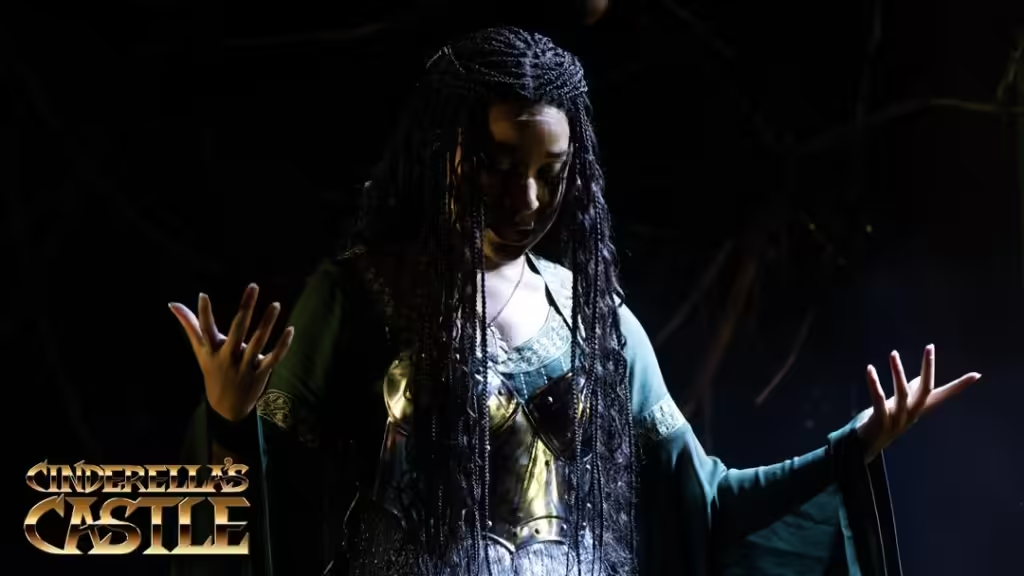A unique and inventive retelling of the traditional fairy tale, Cinderella’s Castle (2025) distinguishes itself from the numerous adaptations that have adorned stages and screens for countless generations. The movie presents a distinctive interpretation of the well-known tale with its darkly humorous tone, musical interludes, wizardry, and puppetry. This combination of components produces an experience that viewers have never seen before. The main characteristics that set Cinderella’s Castle (2025) apart from its forerunners are examined in this article.
A Darkly Comedic Twist
The darkly humorous style of Cinderella’s Castle (2025) is among its most remarkable features. Cinderella has historically been adapted with a romantic and fantastical bent, frequently depicting the title character as a personification of innocence and purity in a magical setting. Although these renditions are charming, Cinderella’s Castle deviates significantly by introducing humor with a sinister undertone. The movie adds a satirical touch to its narrative by not holding back when ridiculing the fairy tale’s traditions.
The evil daughters of the stepmother, portrayed by Angela Giarratana, are not merely cruel foes; rather, they are portrayed as characters with exaggerated villainy that are meant to elicit laughter and further investigation. Rancilda, played by Lauren Lopez, enhances this with her wickedly funny antics. But there is more than one side of the cast where the humor appears. Even the protagonist of the tale, Ella Ashmore (portrayed by Bryce Charles), is given a more nuanced personality as she deftly handles the difficulties of her fantasy world while displaying a wit and irony that are seldom found in other adaptations.
The Use of Puppetry
Another unique aspect that sets Cinderella’s Castle (2025) apart is puppetry. This version adopts a more conventional method of visual storytelling through puppetry, whereas many adaptations rely on computer-generated imagery (CGI) to create magical creatures or other fantastical elements. The use of puppetry gives the movie a tactile, dramatic feel that endears viewers and evokes memories.
A whimsical atmosphere reminiscent of the early days of fantasy storytelling is created in the film through the use of puppetry to bring certain characters to life. It is an imaginative decision that honors Cinderella’s origins as a tale passed down through the ages in a variety of formats. This decision also deviates from the hyper-realistic effects that characterize contemporary fairy tale adaptations, lending Cinderella’s Castle a more personal, handmade feel consistent with its whimsical and humorous tone.
Blending Music and Wizardry
Many Cinderella adaptations feature music, but Cinderella’s Castle (2025) elevates this custom by skillfully fusing it with wizardry’s magical elements. Not only does music serve as a setting or a vehicle for the characters’ emotions in this movie, but it is also an essential component of the magic. Songs are a tool used by the characters to direct the plot, control their surroundings, and cast spells.
The film has a distinct energy due to the combination of music and magic, which results in moments of humor and wonder. For instance, Kim Whalen’s portrayal of The Fairy Queen of Sweet Dreams employs her musical prowess to summon magical effects, frequently with amusing or surprising results. This arrangement of components gives the movie depth and elevates it above other musical fantasies.
Complex Characters and Relationships
While the romantic relationship between Cinderella and the Prince is the main focus of many Cinderella adaptations, Cinderella’s Castle (2025) explores the interpersonal dynamics of the characters in novel ways. More subtlety is added to Ella’s relationship with her stepfamily, fusing humor with a realistic touch. James Tolbert’s character, The Prince, is more than just a one-dimensional romantic lead; he has eccentricities and shortcomings that add to his relatability and humor.
The way Jon Matteson plays Sir Hop-A-Lot and Curt Mega plays Tadius gives the ensemble more nuance and gives each character a distinct role in the narrative. These connections weave a complex web of interactions that keep the audience interested in addition to being essential to the plot and highlighting the magical and comedic aspects.
A Modern Fairy Tale for Today’s Audience
Cinderella’s Castle (2025) is essentially a contemporary fairy tale for a modern audience. It offers something wholly original while toying with the notions of the traditional Cinderella tale. Dark humor, music, wizardry, and puppetry are all combined in the film to create a magical experience that is simultaneously familiar and innovative. Expect a fairy tale that is as captivating as ever, but with additional depth, visual inventiveness, and humorous layers that set it apart from the many other adaptations.
